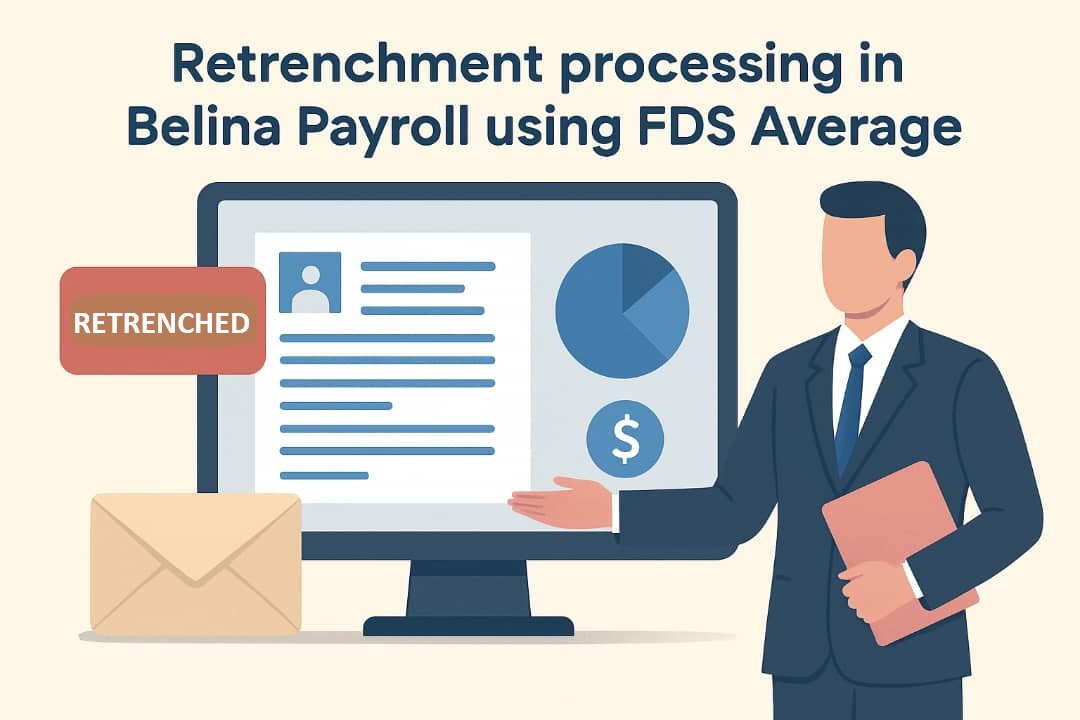
Retrenchment Processing in Belina Payroll Using FDS Average
Processing a retrenchment package in Belina Payroll requires compliance with labour laws, correct tax treatment, and accurate payroll input. This article details the key aspects of this process, providing a clear guide for employers.
- Tax Treatment: The Finance Act grants partial tax exemption on retrenchment packages. The exempt amount is the greater of one-third of the package or USD $3,200 (ZWL equivalent), capped at one-third of USD $15,100. The balance is taxed as irregular earnings. For example, on USD $12,000, one-third (USD $4,000) is exempt; the remaining USD $8,000 is taxable.
- Retrenchment Amount Guidance: Determining the correct retrenchment package can be complex. The Labour Act provides the guiding framework. Section 12C of S.I. 191 of 2024 states that:
“Unless better terms are negotiated and agreed between the employer and the employee or employees concerned or their representatives, a minimum retrenchment package of one month’s salary or wages for every year of service as an employee or the equivalent, lesser proportion of (one month’s salary or wages for a lesser period of service) shall be paid as compensation for loss of employment.”
- Employers may apply for exemption due to financial incapacity but should first consult labour consultants, the NEC, or the retrenchment board to ensure compliance. This step is crucial before processing any payments in the Belina system.
Processing Retrenchment in Belina Payroll with FDS Average
Processing the retrenchment package in Belina Payroll is designed to be straightforward once the retrenchment amount and tax parameters are clear. The software automates the tax calculation based on set configurations.
Step-by-Step Guide
- Create the Transaction Code under the Earnings Retrenchment Category.
- Input the Package on an employee’s payslip input: Belina Payroll allows you to process the retrenchment package along with the employee’s other regular earnings for the period.
- Verify Retrenchment Tax settings and run Tax Computation: Belina applies exemptions and taxes the balance using gazetted tax tables. The system supports dual-currency payrolls, splits calculations proportionally, and exports correctly into the TARMS file.
This guide provides an overview of processing a retrenchment package using the Belina Payroll system. Belina Payroll Retrenchment Package.
How FDS Average Affects Taxation on Retrenchment Earnings
The FDS Average tax method ensures accurate tax on irregular earnings. While regular income is annualized, retrenchment packages are taxed as lump sums without inflating projected annual income. Employers using PAYE may see variances with ZIMRA as its portal does not yet support PAYE.
For more details, see: Understanding FDS Averaging in Employee Tax Calculation.
Conclusion
By following Labour Act procedures, applying exemptions, and processing retrenchment through Belina Payroll with the FDS Average method, employers ensure compliance and fair tax treatment for employees during retrenchment. By Ashlene Moyo



